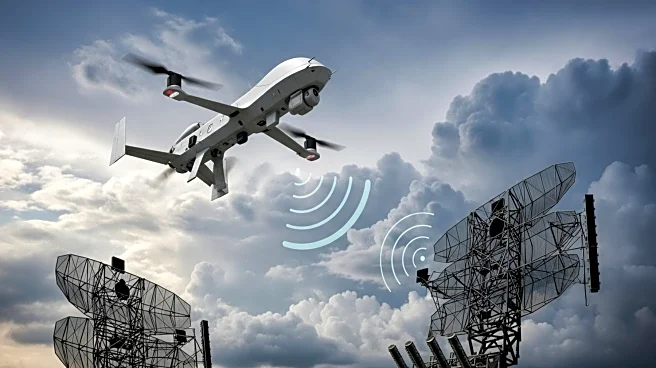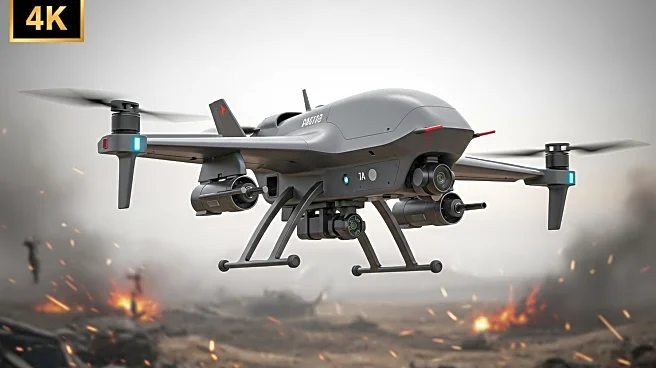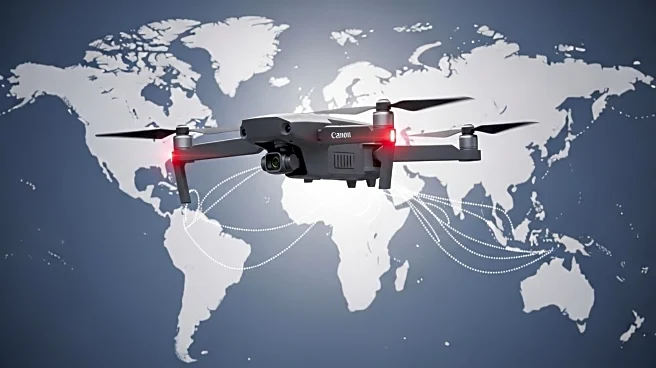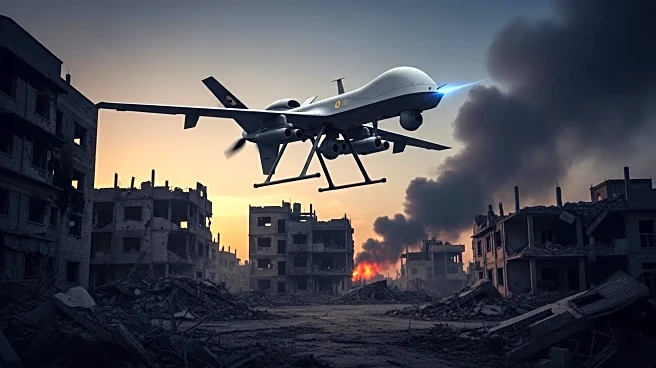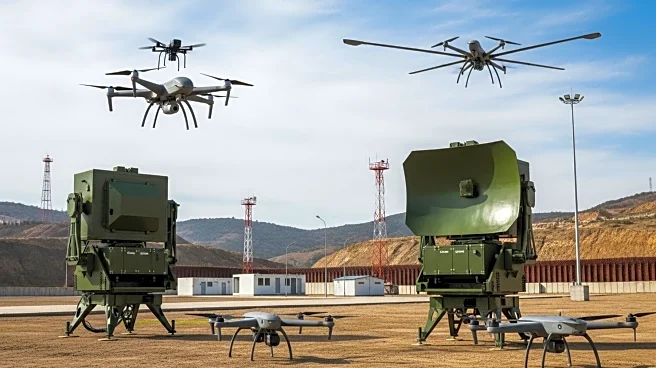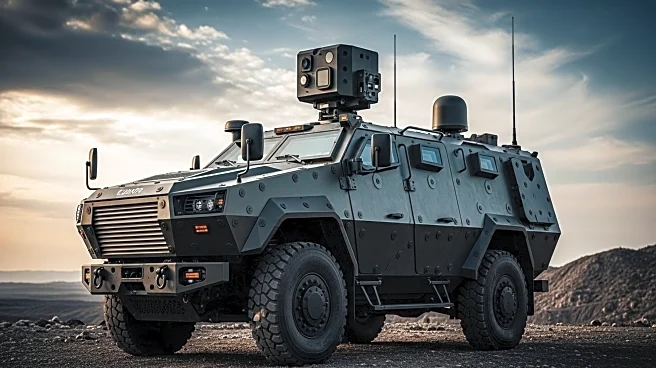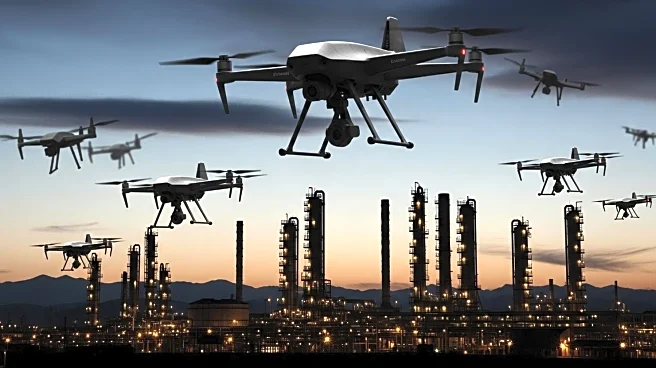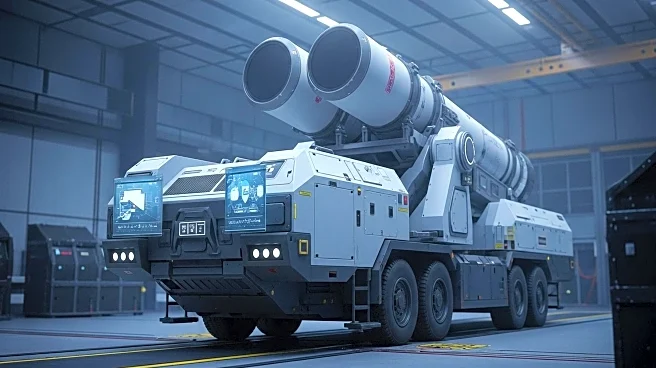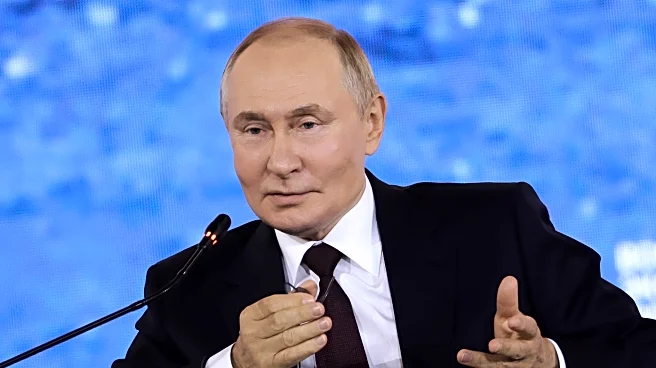What's Happening?
In the ongoing conflict between Ukraine and Russia, both nations have increasingly employed decoy drones as a strategic tool to confuse and overwhelm enemy air defenses. According to Ukrainian air force spokesman Yuri Ihnat, approximately half of the drones used in Russia's recent aerial attacks are inexpensive imitations designed to provoke the use of costly missiles against them. These decoys, which can be as simple as plywood constructions, appear identical to lethal Shahed drones on radar, thus complicating defense efforts. Ukraine has also been deploying decoys, including inflatable tanks and flat-pack guns, to mislead Russian forces and conserve valuable resources. Volunteer groups in Ukraine have been instrumental in supplying these decoys, which are designed to mimic real military equipment and deceive enemy intelligence. The use of decoys is a critical tactic in the war, allowing both sides to conserve resources while attempting to mislead the opposition.
Why It's Important?
The use of decoy drones and other imitation military equipment in the Ukraine-Russia conflict highlights a significant evolution in modern warfare tactics. This strategy not only conserves resources but also forces the enemy to expend expensive ammunition on non-threatening targets. For Ukraine, this approach is vital in maintaining its defense capabilities against a larger adversary. The widespread use of decoys could influence future military strategies globally, as nations seek cost-effective methods to protect their assets and mislead opponents. Additionally, the involvement of volunteer groups in producing these decoys underscores the importance of civilian contributions in wartime efforts, potentially inspiring similar initiatives in other conflicts.
What's Next?
As the conflict continues, both Ukraine and Russia are likely to further refine their use of decoys, potentially developing more sophisticated methods to deceive enemy forces. This could lead to an arms race in decoy technology, with each side striving to outsmart the other. The international community may also take interest in these tactics, leading to discussions on the ethical implications of using imitation equipment in warfare. Furthermore, the effectiveness of these decoys could prompt other nations to adopt similar strategies, potentially altering the landscape of military engagements worldwide.
Beyond the Headlines
The use of decoys in warfare raises ethical questions about the manipulation of enemy perceptions and the potential for increased civilian involvement in military operations. As volunteer groups play a significant role in producing these decoys, the line between civilian and military efforts becomes blurred, potentially leading to increased risks for those involved. Additionally, the reliance on decoys may shift the focus of military innovation towards deception technologies, impacting the development of future defense systems.
